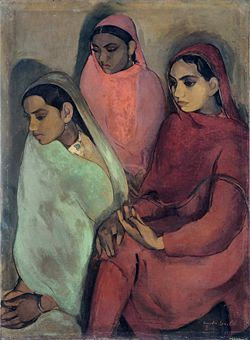The Big Picture is a concerted effort that brings together 57 artists for a fund raising event in Bangalore. Organized by the India Foundation for the Arts (IFA) the art exhibition presents a wide range of paintings, mixed media works and photographs by young and upcoming, and a few senior artists as well.
According to Arundhati Ghosh, the Deputy Director of IFA, “the idea of organizing an art show as a fund raiser germinated last year and then Abhishek Poddar offered to curate it.” This happens to be the Foundation’s first art exhibition. In fact, in a tremendous show of solidarity, the artists have come forward to donate, in full or in part, the sale proceeds of their works for IFA. Incidentally, IFA is an organization that provides grants for art and culture activities and has been supporting independent research and teaching institutions, cultural and development organizations, musicians, visual artists and filmmakers amongst a host of other professionals in related fields.

For this particular event, well known artists such as Gulammohammed Sheikh, N S Harsha, Jayashree Chakravarty and Mithu Sen, and photographers such as Raghu Rai, Shahid Datawala, and Navroze Contractor are just a few names that comprise the vast list. All the works have been priced under Rs 5 lakhs. The online catalogue offers a promising line-up of works with a significant section devoted to prints.
While, many of the artists may not be a familiar sight on the Bangalore art scene, they have been exhibiting elsewhere. “These are outstanding works by some of our most talented artists and very well priced too keeping in mind the economic situation,” writes Abhishek Poddar in his curatorial note.
The exhibition although happening in Bangalore is also being showcased online and as Arundhati describes it, “It is a national show with a local physical presence.” Here’s hoping that art connoisseurs come forward to support art for arts’ sake.
(The Big Picture will be held between April 5 - 8, 2009, at WelcomArt Gallery, ITC Windsor and from April 10 - 15, 2009, (Sunday closed) at Gallery Sumukha, 24/10, BTS Depot Road, Wilson Garden, Bangalore).
(Published in Bangalore Mirror)



















.jpg)


 Then, there are a few artists one comes across locally who become proficient in a particular theme or style, and if they experiment it is only within their comfort zone. Having perfected a particular form of art with a high saleability factor, it is no surprise that these artists are less willing to take chances.
Then, there are a few artists one comes across locally who become proficient in a particular theme or style, and if they experiment it is only within their comfort zone. Having perfected a particular form of art with a high saleability factor, it is no surprise that these artists are less willing to take chances. In fact, in what was a first, Hirst took his works to Sotheby’s directly sans galleries and dealers, which means he collects their commissions too. Taxidermist, publicity monger - these are some of the epithets that have been heaped upon Hirst, as his choice of medium and marketing strategies have always been controversial. Art market analysts were skeptical if the sale would be successful at all, but then Sotheby’s and Hirst went all out to woo prospective buyers. A genius whether in marketing or creativity, well, that is debatable.
In fact, in what was a first, Hirst took his works to Sotheby’s directly sans galleries and dealers, which means he collects their commissions too. Taxidermist, publicity monger - these are some of the epithets that have been heaped upon Hirst, as his choice of medium and marketing strategies have always been controversial. Art market analysts were skeptical if the sale would be successful at all, but then Sotheby’s and Hirst went all out to woo prospective buyers. A genius whether in marketing or creativity, well, that is debatable.